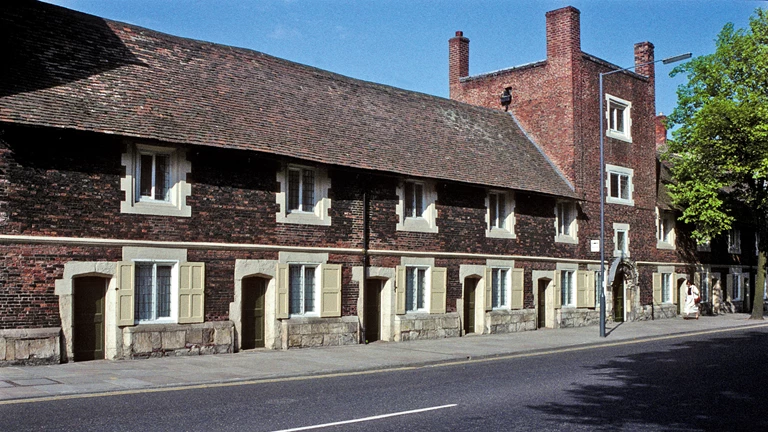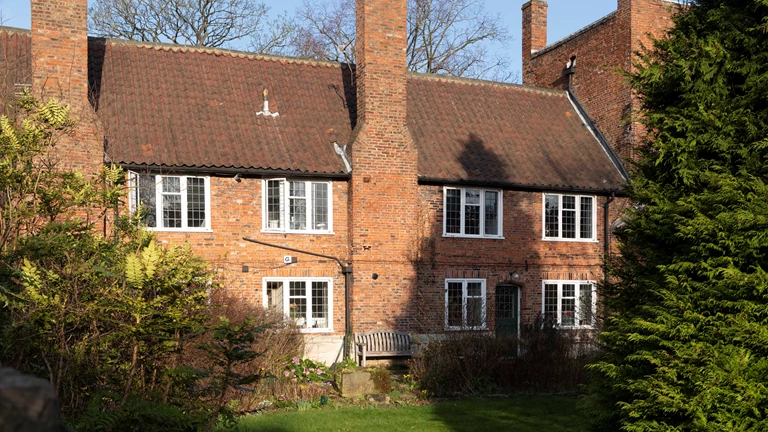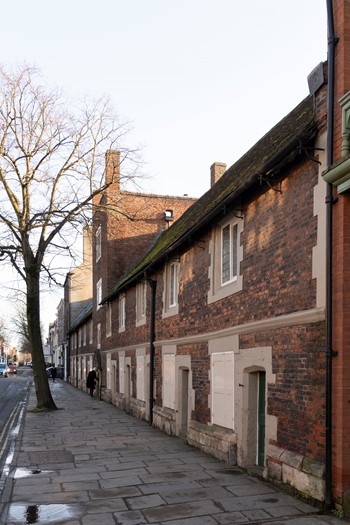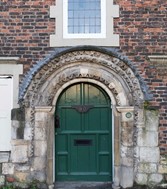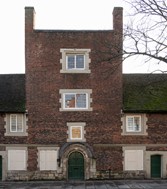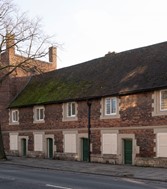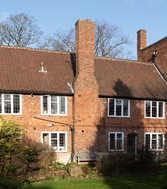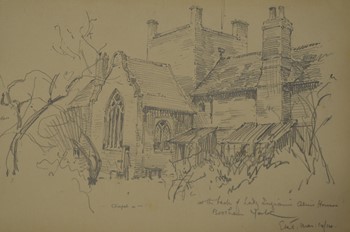Ingram House
Ten widows, a Royalist lookout and home to York residents since 1632
Intended for “ten poor York widows”, you’ll find Ingram’s Almshouse, or Ingram House, in Bootham, on the road north out of York. Built between 1630 and 1632, composed of eleven bays of two low storeys, with a four-storey central tower, the handsome brick and stone building was the idea of the immensely wealthy Sir Arthur Ingram.
High Sheriff of the County in 1620 and a Member of Parliament for York four times, Sir Arthur was granted the right to fell trees over most of the 7,600 acres of Galtres forest to make way for greater arable development. To counter the many local complaints about enclosing the land, he judged an almshouse an appropriate donation to the City Corporation and people of York.
On its northern boundaries, with trees extending right up to York's walls, the Royal Forest of Galtres was established by the Norman kings. The main settlement was the village of Easingwold and in 1316 the Forest boasted 60 villages in some 100,000 acres of woodland. Piecemeal land sales rapidly depleted the forest to the extent that the Act of Dis-Afforestation of 1629 sealed its fate.
Referred to in Shakespeare's play Henry IV, Part 2 under the anglicised name of "Gaultree Forest", in its heyday oak from the Forest was said to rival that of Sherwood. Much later, when York Guildhall was reconstructed after wartime bomb damage, a single oak trunk from the remnants of the Forest was used for each oak pillar.
Remarkably, the Ingram’s Almshouse accounts survive in the Ingram papers at Temple Newsam, Sir Arthur’s country seat near Leeds (Christopher Gilbert, Ingram’s Almhouse, York, York Historian, Vol 1, 1976). We know, for example, that Thomas Haggis was paid 2 pounds 18 shillings and 6 pence for “hewing 10 door-steads on the front side” and, also, agreeing “to make the stone drip-course to throw rainwater off the walls.” James Etty made “two pairs of stairs at the Hospital Chapel” and, a generation later in 1714, his son John would design and build another of York’s iconic buildings, The Red House on Duncombe Place, which is also in the care of the Trust.
It is also remarkable that the building survived the 1644 siege of York, given that most of the buildings along Bootham were taken down to prevent their use by the approaching Parliamentarian troops. It is possible that the tall central tower could have made a useful lookout for York’s Royalist defenders. Although damaged, being a charitable institution may also have spared it, as was the case for the two hospitals near Micklegate Bar.
From the pavement of Bootham you’ll find an elaborately carved late Norman doorway, originally part of Holy Trinity church, Micklegate, it was purchased by Sir Arthur for 13 shillings and 4 pence. Inside, the widows’ accommodation consisted of a 12 x 18 ft living room with an open fire and a narrow staircase set to the side of the fire stack, which led up to an unheated bedroom. The widows received a regular stipend (or allowance), a new gown every three years and a silver-gilt badge bearing a cock, the Ingram crest. Their income could also be supplemented by hemp spinning.
The large rear garden housed the toilets, or privies, together with a well and allotments for the growing of fruit and vegetables. There was also a chapel attached to the back of the building, which the architect Ridsdale Tate recorded in a unique sketch showing the Gothic windows incorporating the Ingram Coat of Arms within its stained glass.
In 1957 the property was acquired by Ings Trust, the forerunner of York Conservation Trust. Converting the building into five well-appointed apartments, the Trust has not only preserved this important building, but also ensured that Ingram House can continue to provide comfortable homes and play its role in York’s rich social history.
Discover more about Ingram House
Ingram House
90 Bootham
York
YO30 7DG
Historic England Grade ll* listed building

